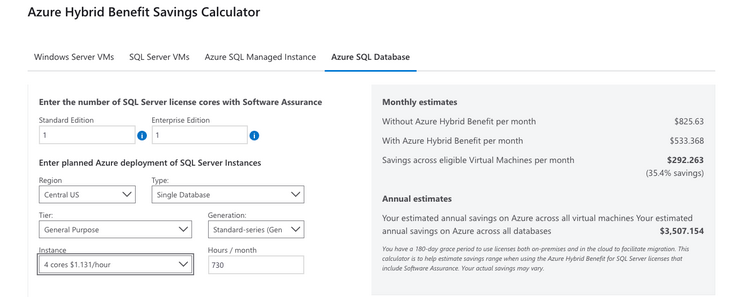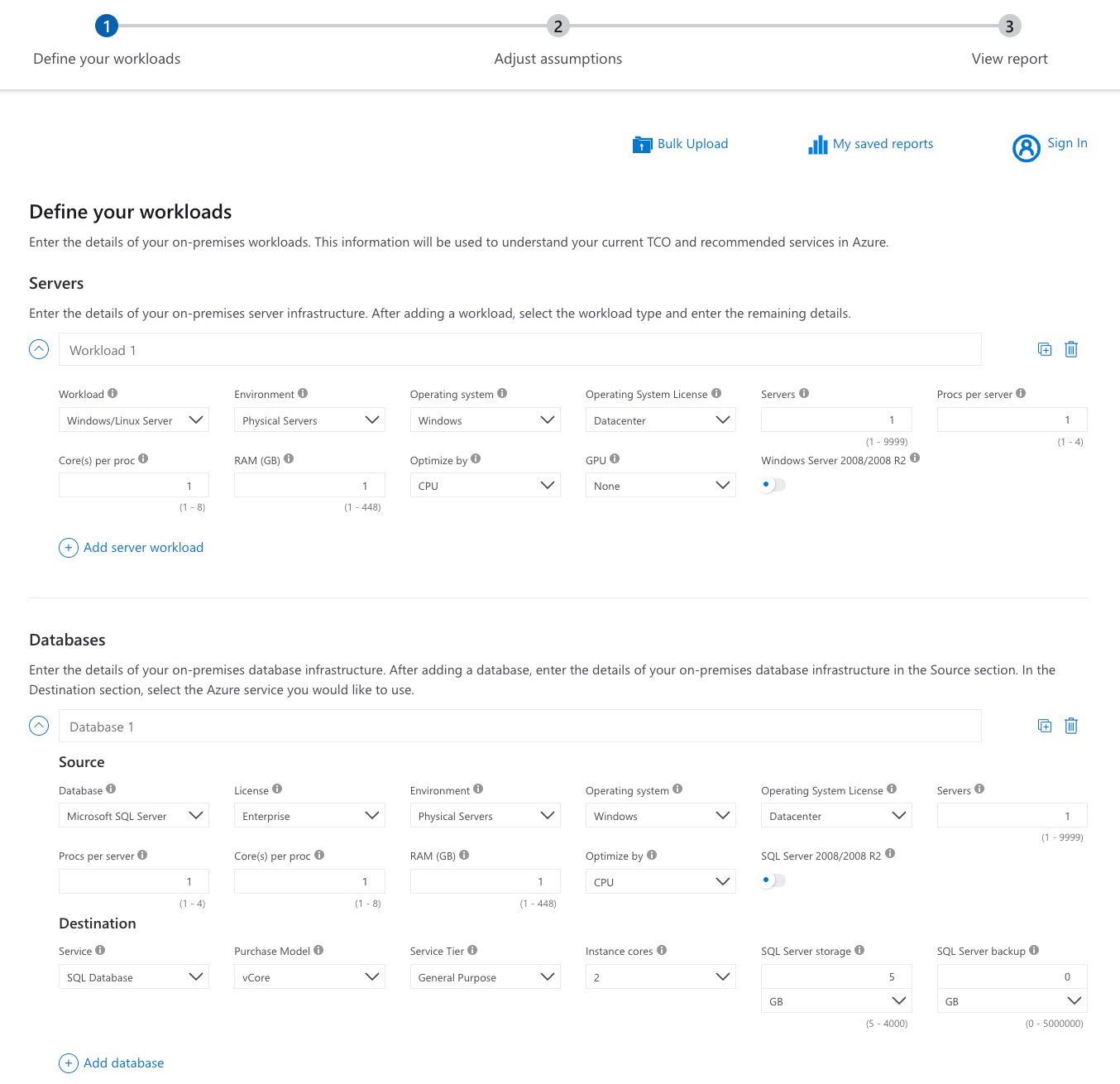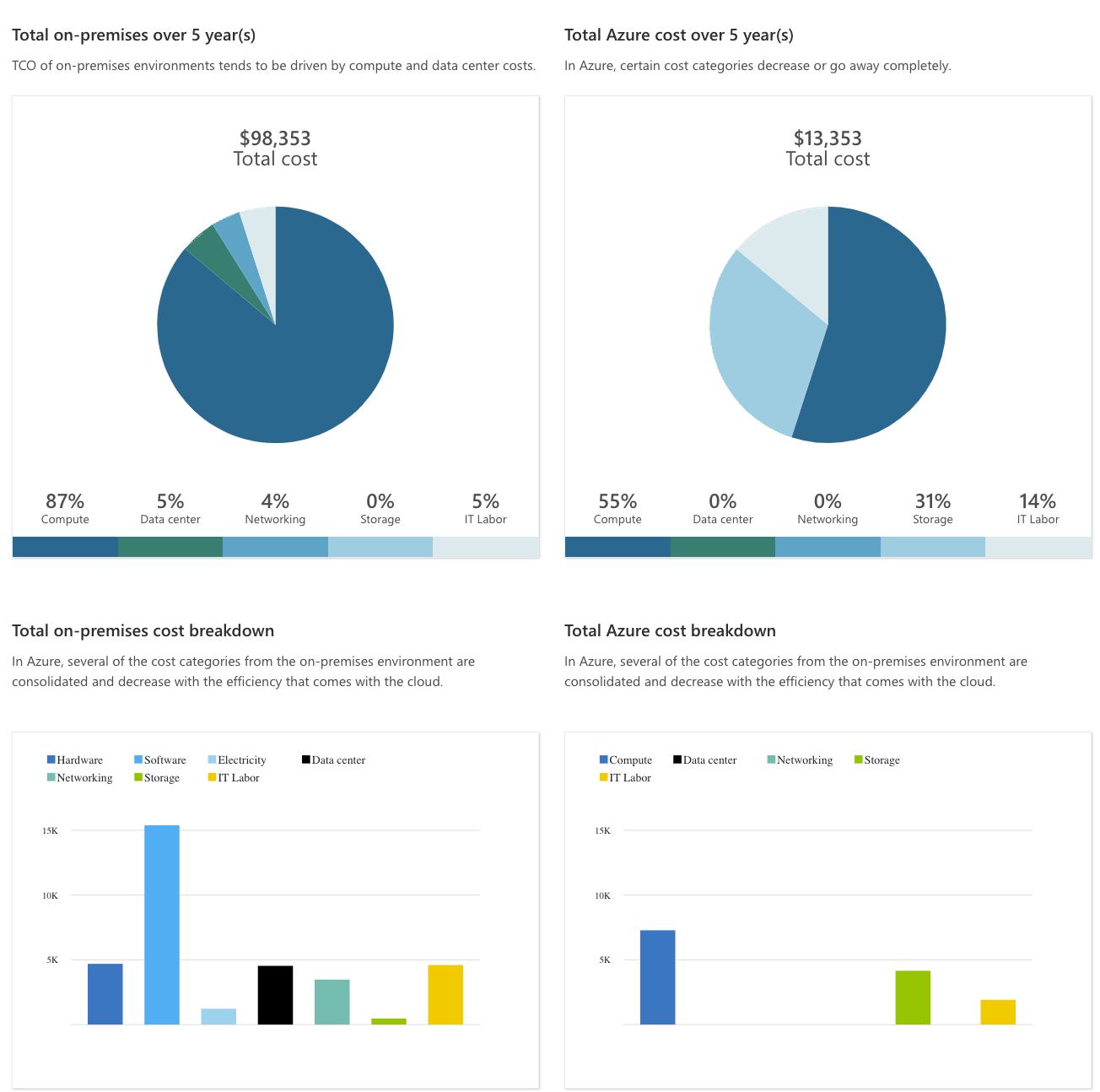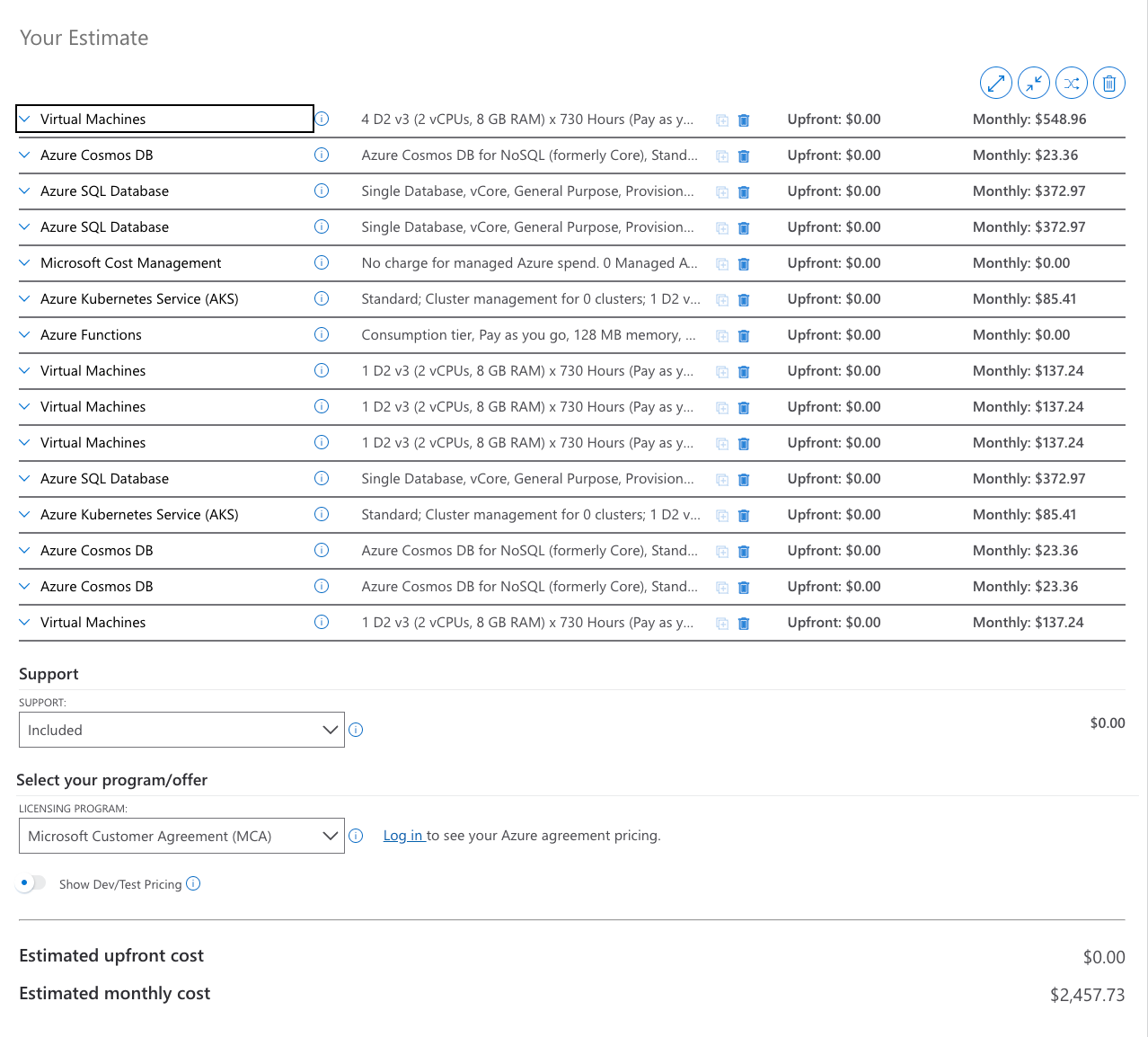The uncertainty of expenses, not just high costs, often stops companies from migrating to Azure. To address this, cost-conscious organizations should create a detailed budget for Azure migration. This helps predict and manage expenses effectively. After transitioning to Azure, it's important to monitor cloud service usage and use resources efficiently. Azure's cost control tools are vital for this. Adopting this strategy reduces uncertainties around cloud migration costs and improves financial management.
Reducing Cloud Costs Before Migration: Building a Budget
Companies often face overpayment challenges due to Azure's complex pricing, cloud metric misconception, and lack of expert guidance. A key step in preparing for these intricacies is developing a strategic budgeting plan that sets the foundation for a smooth migration.
Key budgeting process focuses on:
- identifying and optimizing major cost drivers
- selecting the right hosting region to balance cost with performance
- choosing cost-effective architectural solutions
- defining the necessary computing power and storage requirements
Addressing these aspects is essential to avoid unnecessary expenses and make informed decisions throughout the Azure cloud migration journey.
With Belitsoft's application modernization services, you can evaluate your legacy systems, decrease inefficiencies, and modernize architectures for improved cloud performance and reduced costs.
Planning Cloud Resource Utilization
Selecting the Appropriate Service
As part of our cloud migration strategy, we conduct a thorough assessment of your current on-premises resources, encompassing databases, integrations, architecture, and application workloads. The goal is to transition these elements to the cloud in a way that maximizes resource efficiency, optimizes performance, and reduces costs post-migration.
Consider, for instance, a customer database primarily active during business hours in your current setup. In planning its cloud migration, we assess cloud storage and access patterns, considering them a critical aspect. There are several methods for this, such as using Azure VM running SQL, Azure SQL Database, Managed Instance, or a Synapse pool, each offering unique features.
In this scenario, for cost-efficiency, the Azure SQL Database’s serverless option might be the preferred choice. It scales automatically, reducing resources during off-peak times and adjusting to meet demand during busy periods. This decision exemplifies our approach to matching cloud services to usage patterns, balancing flexibility and cost savings.
Our detailed pre-migration planning prepares you for a cloud transition that is both efficient and economical. You'll have a clear strategy to effectively manage and optimize cloud resources, leading to a smoother and more budget-friendly migration experience.
Calculating necessary computing power and storage to avoid overpayment
When migrating to the cloud, it's not a good idea to blindly match the resources 1:1, as it can lead to wasted spending.
Why? On-premises setups usually have more capacity than needed for peak usage and future growth, with around 30% CPU utilization. In contrast, cloud environments allow for dynamic scaling, adjusting resources in real time to match current needs and significantly reducing overprovisioning.
As a starting point, we aim to run cloud workloads at about 80% utilization to avoid paying for unused resources.
Utilizing TCO Calculator for Cost Comparisons
To define the optimal thresholds for computing power and storage, we evaluate your workloads, ensuring you only invest in what is necessary to build. There are tools like Database Migration Assistant (DMA), Database Experimentation Assistant (DEA), Azure Migrate, DTU Calculator, and others that can assist in this process.
Our cloud migration team uses the Total Cost of Ownership (TCO) Calculator to provide a comprehensive financial comparison between on-premises infrastructure and the Azure cloud. This tool evaluates costs related to servers, licenses, electricity, storage, labor, and data center expenses in your current setup and compares them to the cloud. It helps you understand the financial implications of the move.
Accurately Budgeting Your Cloud Resources with Azure Pricing Calculator
After gaining a general understanding of potential savings with the TCO Calculator, we employ the Azure Pricing Calculator for a more detailed budget for your cloud resources.
This free web-based tool Microsoft that helps estimate the costs of specific Azure services you plan to use. It allows you to adjust configurations, choose different service options, and see how they impact on your overall budget.
Selecting the Region for Cloud Hosting
When preparing for cloud migration, selecting the right Azure hosting region involves a balanced consideration of latency, and cost.
Evaluating Latency
Our assessment focuses on the speed of data access for your end-users. Contrary to assumptions, the best region is not always the closest to your company's office but depends on the location of your main user base and data center.
For example, if your company is based in Seattle but most users and the data center are in Chicago, a region near Chicago would be more appropriate for faster data access. We use tools like Azurespeed for comprehensive latency tests, prioritizing your users' and data center's location over office proximity.
- Complexity with multiple user locations: Choosing a single Azure region becomes challenging, with a diverse user base spread across multiple countries. Different user groups may experience varying latency, affecting data transmission speed. In such scenarios, hosting services in multiple Azure regions could be the solution, ensuring all users, regardless of location, enjoy fast access to your services.
- Strategic planning for multi-region hosting: Operating in multiple regions requires careful planning and data structuring to balance efficiency and costs. This may include replicating data across regions or designing services to connect users to the nearest region for optimal performance.
Evaluating Cost
Costs for the same Azure services can vary significantly between regions. For instance, running a D4 Azure Virtual Machine in the East US region costs $566.53 per month, while the same setup in the West US region could rise to $589.89. This seemingly small price difference of $23.36 can cause significant extra expenses annually.
Let's consider a healthcare enterprise with 20 key departments that requires about 40 VMs for data-intensive apps. If they choose the more expensive region, it could add around $11,212 to their annual costs. So, the decision of which region to choose is not just about picking the lowest cost option. It involves balancing cost with specific operational needs, particularly latency.
We aim to guide you in selecting a hosting region that delivers optimal performance while aligning with your budgetary constraints. This will ensure a smooth and cost-effective cloud migration experience for your business.
Reducing Cloud Costs Post-Migration
Transfer existing licenses
If you have existing on-premises Windows and SQL Server licenses, we can help you capitalize on the Azure Hybrid Benefit. This allows you to transfer your existing licenses to the cloud instead of buying new ones.
To quantify the savings, Azure provides a specialized calculator. We use this tool to help you understand the financial advantages of transferring your licenses and discover potential cost reductions. Our goal is to ensure you get the most value out of your existing investments when moving to the cloud.

Continual Architectural Review for Cost Savings
After migrating to Azure, it’s vital to review your cloud architecture periodically. Cloud services frequently introduce new, cost-efficient alternatives, presenting opportunities to reduce expenses without compromising on functionality.
While it's not recommended to overhaul your architecture for small savings, substantial cost reductions warrant consideration.
For instance, let's say you initially set up an Azure virtual machine for SQL Server, but later discover that Azure SQL Database is a more affordable option. By switching early, you can save on costs and minimize disruption.
To illustrate, consider a healthcare company that moved its patient data management system to Azure using Azure Virtual Machines. This setup cost them $7,400 per month (10 application server VMs at $500 each and 3 database server VMs at $800 each). However, after implementing Azure Kubernetes Service (AKS) and Azure SQL Database Managed Instance, they reevaluated their setup.
Switching to AKS for application servers and Azure SQL Database Managed Instance for databases required a one time expense of $35,000, which covered planning, implementation, and training. This change brought their monthly expenses down to $4,500, (AKS at $3,000 and Azure SQL Database Managed Instance at $1,500), resulting in monthly savings of $2,900.
Within a year, these savings will have offset the initial migration costs, resulting in an annual saving of approximately $34,800.
Autoscale turning on and off the computing resources on demand
Azure's billing model charges for compute resources, like virtual machines (VMs), on an hourly basis. To reduce the overall spend, we identify and turn off resources you don't need to run 24/7.
Our approach includes:
- We thoroughly review your Azure resources to optimize spending, focusing on deactivating idle VMs.
- Organizing resources with clear naming and tagging helps us to track their purpose and determine the best times for activation and deactivation.
- Resources used for development, testing, or quality assurance, like Dev/Test/QA, often remain idle overnight and on weekends. We can automate turning them off when they're not needed, resulting in significant cost savings. Compared to production VMs, the savings from these resources can be substantial.
For example, consider an organization with 1.5 TB of production data on SQL Servers, primarily used for monthly reporting, costing about $2,000 per month. Since these systems are idle about 95% of the time, they're incurring unnecessary costs for mostly unused resources.
With Azure's autoscaling feature, the organization can configure the system to scale up during high-demand periods, like the monthly reporting cycle, and scale down when demand is low. This way, they only pay the full rate of $2,000 during active periods (only 5% of the month), reducing monthly costs to around $600. Annually, this leads to saving of $16,800, a significant reduction in expenditure.
Cost-conscious organizations can effectively handle and save on cloud migration expenses by partnering with Belitsoft's cloud experts, who handle Azure migration budget planning and ongoing cost management. Contact us to involve our experts in your cloud migration process.
Recommended posts
Portfolio

Our Clients' Feedback






















.jpg)
.jpg)
.jpg)
.jpg)
.jpg)
.jpg)
.jpg)
.jpg)
.jpg)
.jpg)
.jpg)
.jpg)
.jpg)
.jpg)
.jpg)
.jpg)
.jpg)

















We have been working for over 10 years and they have become our long-term technology partner. Any software development, programming, or design needs we have had, Belitsoft company has always been able to handle this for us.
Founder from ZensAI (Microsoft)/ formerly Elearningforce